Managing natural resources today isn’t just about conservation – it’s about understanding what’s actually happening on the ground (and often from above). With new tools powered by AI, geospatial data, and automation, we can track forests, water, and land use more accurately than ever before. These tools don’t replace human expertise, but they make it way easier to make informed decisions and act before small issues turn into big problems.

1. FlyPix AI
We at FlyPix AI work on making natural resource management a lot more efficient through automated geospatial analysis. Our platform combines AI with satellite, aerial, and drone imagery to help monitor and understand environmental changes over large areas. Instead of spending days manually reviewing data, we let our AI models identify and outline objects in just a few seconds. That makes it easier for teams to track vegetation, water levels, or land use patterns without getting lost in endless files and spreadsheets.
We’ve also built FlyPix AI to be adaptable. You can train your own AI models without needing to write code or have deep technical experience. This means every organization can set up detection rules specific to its fieldwork – from analyzing forest health to spotting erosion or monitoring construction near protected zones. Our goal is to give users a clear, fast, and reliable way to make informed decisions about natural resources using data they already collect from the sky.
Key Highlights:
- AI-driven detection and annotation for natural resource monitoring
- Works with satellite, drone, and aerial imagery
- Custom AI training without programming skills
- Simplifies environmental analysis across multiple industries
- Cloud-based platform for easy access and collaboration
Who it’s best for:
- Environmental teams tracking forests, land, or water resources
- Public agencies responsible for conservation and land management
- NGOs studying environmental impact and restoration
- Infrastructure and energy companies monitoring environmental compliance
Contact and Social Media Information:
- Website: flypix.ai
- Address: Robert-Bosch-Str. 7, 64293 Darmstadt, Germany
- Phone: +49 6151 3943470
- E-mail: info@flypix.ai
- LinkedIn: www.linkedin.com/company/flypix-ai

2. CARTO
CARTO develops cloud-based mapping and spatial analysis tools that help organizations manage natural resources more intelligently. Their platform connects geospatial data from multiple sources and turns it into maps, models, and insights that can guide environmental planning or monitoring projects. Teams can explore land use, track deforestation, assess flood-prone zones, or analyze biodiversity patterns without heavy technical overhead. Everything happens in one place, from visualization to AI-powered analytics, which helps reduce the complexity that often comes with traditional GIS systems.
They approach geospatial work through automation and accessibility. With CARTO, users can build spatial models, train AI agents, and visualize results interactively through dashboards. It’s built to work directly with existing cloud environments, so data never has to be exported or manually processed. For natural resource management, that means better coordination across teams and faster decisions based on near real-time data.
Key Highlights:
- AI and low-code tools for spatial analysis and data visualization
- Cloud-native GIS system for seamless integration and governance
- Custom AI agents for spatial automation and prediction
- Compatible with large-scale environmental datasets
- Built-in app development tools for field and research use
Who it’s best for:
- Environmental organizations managing land and water resources
- Urban planners and researchers using geospatial data
- Government agencies tracking land change and sustainability
- Teams that want cloud-based collaboration for environmental data
Contact and Social Media Information:
- Website: carto.com
- E-mail: rfp@carto.com
- LinkedIn: www.linkedin.com/company/carto
- Twitter: x.com/CARTO
- Facebook: www.facebook.com/CartoDB

3. Overstory
Overstory builds AI software that uses satellite and aerial imagery to monitor vegetation and support resource management, especially in the context of utility and wildfire risk. Their tools analyze how vegetation interacts with infrastructure, helping organizations prevent outages, improve safety, and reduce fire hazards. Instead of relying solely on field inspections, users can visualize vegetation health, identify high-risk zones, and prioritize where to send crews or focus attention.
They combine remote sensing data with terrain and environmental information to create a clear picture of how natural systems are changing over time. This data-driven approach helps utilities and environmental groups plan ahead rather than react to emergencies. Overstory’s technology makes it easier to understand where vegetation poses a risk, where it’s thriving, and how ecosystems respond to weather shifts.
Key Highlights:
- AI-powered vegetation intelligence using satellite and aerial imagery
- Data-driven approach to vegetation and wildfire risk monitoring
- Integration with utility and infrastructure systems
- Supports proactive, not reactive, vegetation management
- Cloud-based access for teams across regions
Who it’s best for:
- Utility companies managing vegetation near power lines
- Environmental teams studying forest health and land use
- Government and NGOs working on wildfire prevention
- Organizations focused on climate risk and resilience
Contact and Social Media Information:
- Website: www.overstory.com
- Address: 444 Somerville Ave, Somerville, MA 02143, United States
- E-mail: support@overstory.com
- LinkedIn: www.linkedin.com/company/overstoryai

4. Planet Labs
Planet Labs operates one of the world’s largest fleets of Earth observation satellites, providing daily imagery and environmental insights that support resource monitoring, agriculture, and sustainability projects. Their tools allow users to track changes across forests, farmland, coastlines, and urban areas with high frequency and accuracy. Instead of snapshots taken once in a while, Planet delivers a near-daily stream of updated visuals, helping organizations respond to changes as they happen.
They focus on accessibility and integration, offering a cloud platform where satellite data, analytics, and AI models come together. This combination gives users a full view of natural systems -from deforestation and water use to crop conditions or land development. For governments, research institutions, and environmental organizations, Planet’s platform turns global monitoring into an ongoing, interactive process rather than a one-time event.
Key Highlights:
- Near-daily Earth imagery and environmental monitoring
- AI and analytic tools for tracking natural resource changes
- Global coverage through satellite constellations
- APIs and cloud integration for data access and collaboration
- Supports sustainability, forestry, and land management use cases
Who it’s best for:
- Environmental agencies monitoring ecosystems and land use
- Agricultural organizations assessing crop health and soil conditions
- Research institutions studying global change and sustainability
- Government programs focused on climate action and resource planning
Contact and Social Media Information:
- Website: www.planet.com
- Address: 645 Harrison Street 4th Floor San Francisco, CA 94107
- E-mail: press@planet.com
- LinkedIn: www.linkedin.com/company/planet-labs
- Instagram: www.instagram.com/planetlabs
- Facebook: www.facebook.com/PlanetLabs

5. Pix4D
Pix4D builds photogrammetry software that turns aerial and ground images into accurate maps and 3D visualizations. Their tools are often used in surveying, construction, and agriculture, but they also play an important role in managing natural resources. By stitching together thousands of high-resolution photos, Pix4D lets users model terrain, vegetation, and built structures in detail, helping teams measure, plan, and track environmental change.
They’ve developed different applications within their ecosystem -from PIX4Dcloud for online project sharing to PIX4Dcatch for handheld 3D scanning. Each product connects data collection, processing, and analysis into one workflow. This approach makes it easier for environmental managers to create digital twins of landscapes, assess damage after natural events, or plan land rehabilitation with real measurements instead of estimates.
Key Highlights:
- Photogrammetry tools for drone and ground data
- Cloud platform for collaboration and sharing
- 3D modeling and mapping for terrain and land monitoring
- Compatible with multiple drone and RTK devices
- Training and support for professional users
Who it’s best for:
- Surveyors and engineers mapping natural areas
- Forestry and agriculture professionals tracking land use
- Disaster response teams assessing environmental impact
- Researchers studying terrain and ecosystem changes
Contact and Social Media Information:
- Website: www.pix4d.com
- Address: Route de Renens 24, 1008 Prilly, Switzerland
- Phone: +41 21 552 05 90
- LinkedIn: www.linkedin.com/company/pix4d
- Instagram: www.instagram.com/pix4d_official
- Twitter: x.com/pix4d
- Facebook: www.facebook.com/Pix4D
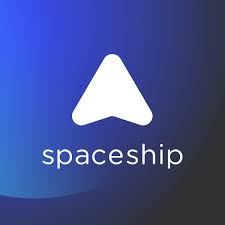
6. Spaceship
Spaceship focuses on digital infrastructure, offering cloud, hosting, and data storage tools designed to make online systems faster and simpler to manage. While not directly built for environmental analysis, their cloud and data services can support large-scale geospatial and resource management projects by providing secure storage and quick data processing.
Teams handling aerial imagery, GIS data, or large map datasets can use Spaceship’s infrastructure to host and access files efficiently without heavy IT setups.
Their focus on privacy and transparency also makes the platform suitable for projects involving sensitive or proprietary environmental data. With tools covering domains, hosting, and secure cloud environments, Spaceship offers a stable digital backbone for organizations managing massive visual and geospatial datasets across distributed teams.
Key Highlights:
- Cloud hosting and data management for digital projects
- Secure infrastructure suitable for large geospatial files
- Transparent pricing and privacy-first approach
- Integrations for online collaboration and storage
- Reliable support for web-based GIS or mapping apps
Who it’s best for:
- Teams needing secure cloud storage for spatial data
- GIS developers building online resource management tools
- Organizations managing high-volume environmental imagery
- Research groups looking for dependable hosting solutions
Contact and Social Media Information:
- Website: www.spaceship.com
- Address: 4600 East Washington Street, Suite 300, Phoenix, AZ 85034, USA
- E-mail: support@spaceship.com
- Instagram: www.instagram.com/spaceship
- Twitter: x.com/spaceship
- Facebook: www.facebook.com/spaceship

7. Cadcorp
Cadcorp provides GIS software and spatial data services that help organizations analyze and visualize location-based information. Their tools are often used to improve environmental planning, public safety, and infrastructure management. For natural resource management, Cadcorp’s solutions can integrate different datasets -such as land cover, topography, or water networks -into a single system that supports smarter decisions about land use and conservation.
They offer a full suite of desktop, web, and server-based GIS products along with consulting and cloud-hosting options. Users can visualize spatial data, run models, and create detailed maps that highlight environmental risks or resource patterns. Cadcorp’s work combines technical expertise with flexibility, making spatial analysis more approachable for government agencies, environmental firms, and research institutions.
Key Highlights:
- Full suite of GIS software for spatial data analysis
- Cloud hosting and managed services for geospatial projects
- Integration with third-party mapping and government data sources
- Consultancy and training for geospatial strategy
- Tools for environmental, land, and infrastructure planning
Who it’s best for:
- Government departments managing environmental data
- Urban planners and land-use researchers
- Emergency and resource management agencies
- Organizations migrating GIS operations to the cloud
Contact and Social Media Information:
- Website: www.cadcorp.com
- Address: Suite 101, Imex Centre, 575-599 Maxted Road, Hemel Hempstead, Hertfordshire, UK
- Phone: +44 (0) 1438 747996
- E-mail: cadcorp@cadcorp.com
- LinkedIn: www.linkedin.com/company/cadcorp
- Instagram: www.instagram.com/cadcorp_sis
- Twitter: x.com/cadcorp
- Facebook: www.facebook.com/Cadcorp

8. Nearmap
Nearmap provides aerial imagery and geospatial intelligence tools that help organizations understand land, infrastructure, and environmental conditions from above. Their system captures detailed, high-resolution imagery using proprietary aerial cameras, then transforms it into usable data through AI-driven analysis and 3D modeling. This setup gives teams a clearer picture of changes in vegetation, assets, and urban development without the need for manual field surveys. For natural resource management, it allows users to monitor landscapes, assess risk, and make evidence-based decisions using current, precise visuals.
They focus on integrating imagery directly into workflows so environmental teams, engineers, and planners can visualize terrain changes, analyze infrastructure impact, or plan responses to natural events with greater accuracy. The platform supports sectors like government, construction, and disaster management by connecting visual data with real-world applications. Instead of static maps, Nearmap provides continuously updated imagery that captures ongoing changes, which helps manage natural and built environments efficiently.
Key Highlights:
- High-resolution aerial imagery with frequent updates
- AI tools for vegetation, asset, and land analysis
- 3D modeling for terrain and infrastructure planning
- Enables remote inspections and condition assessments
- Cloud-based access for data sharing and collaboration
Who it’s best for:
- Government agencies managing land and public assets
- Environmental engineers studying vegetation and terrain
- Urban planners and infrastructure managers
- Disaster response and risk assessment teams
Contact and Social Media Information:
- Website: www.nearmap.com
- Address: Level 4, Tower One, International Towers, 100 Barangaroo Avenue, Barangaroo NSW 2000, Australia
- Phone: +61 2 8076 0700
- LinkedIn: www.linkedin.com/company/nearmap-com
- Instagram: www.instagram.com/nearmap
- Twitter: x.com/nearmap
- Facebook: www.facebook.com/nearmap

9. NV5
NV5 combines engineering, geospatial, and consulting expertise to support environmental and infrastructure projects. Their geospatial services include mapping, data analytics, and remote sensing that help organizations understand and manage land, water, and built environments. They apply technology-driven methods like lidar mapping and GIS analysis to provide insight into terrain, vegetation, and infrastructure conditions, which are key elements in sustainable resource management.
The company takes a multidisciplinary approach, connecting engineering and data analysis to strengthen environmental monitoring and long-term asset planning. This helps both public and private sectors address land-use challenges, evaluate natural systems, and improve resilience against environmental risks. Their experience spans utilities, transportation, and water management, making NV5’s work relevant to projects where accurate geospatial intelligence supports better stewardship of natural resources.
Key Highlights:
- Geospatial data analytics for environmental and infrastructure projects
- Integration of lidar, GIS, and surveying for detailed land mapping
- Asset management and inspection tools across sectors
- Focus on sustainability and infrastructure resilience
- Cross-disciplinary collaboration between engineers and analysts
Who it’s best for:
- Environmental consultants and planners
- Utility and infrastructure organizations
- Water management and land development projects
- Public agencies seeking data-driven environmental insights
Contact and Social Media Information:
- Website: www.nv5.com
- Address: 200 S. Park Rd Suite 350, Hollywood, FL 33021, USA
- Phone: 954.495.2112
- E-mail: AcademyRegistrar@NV5.com
- LinkedIn: www.linkedin.com/company/nv5
- Instagram: www.instagram.com/nv5_inc
- Twitter: x.com/nv5_inc
- Facebook: www.facebook.com/NV5.inc
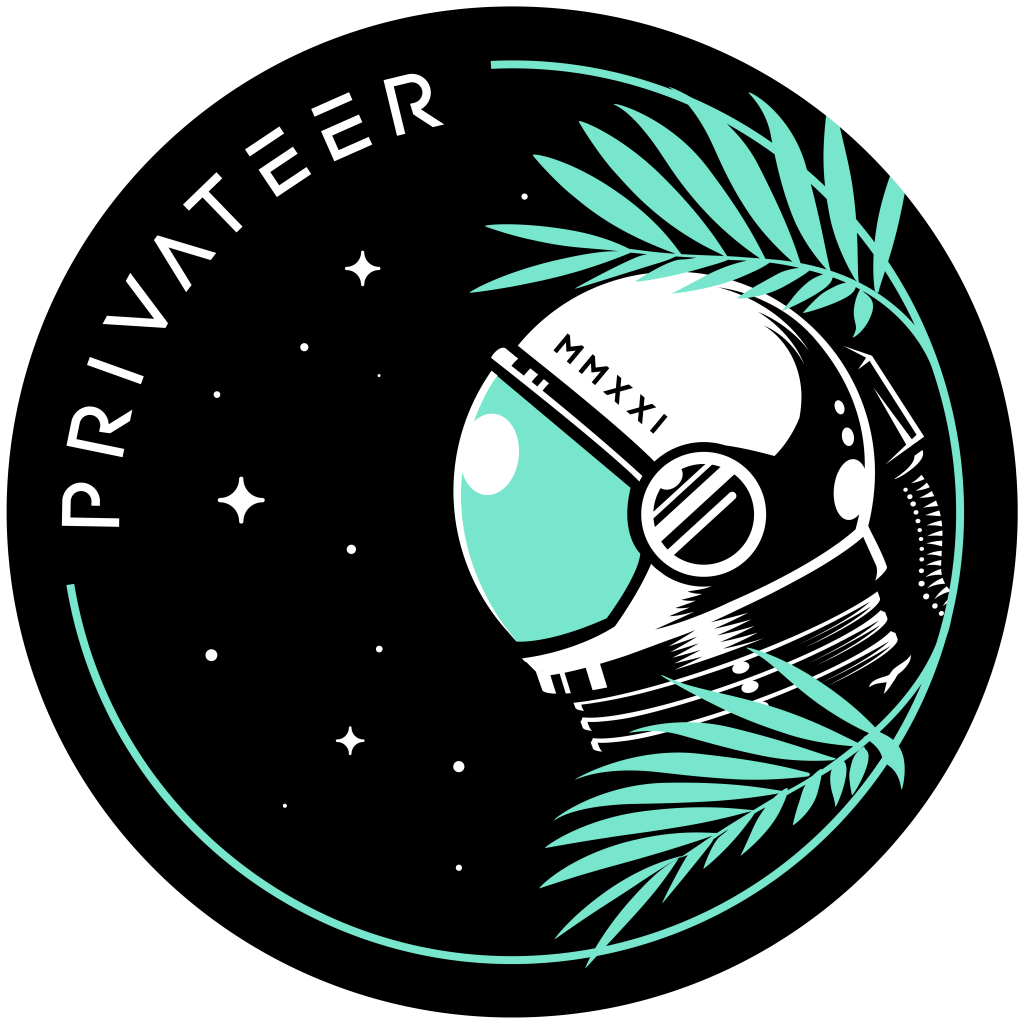
10. Privateer
Privateer develops a data intelligence platform that unites satellite, terrestrial, and sensor data into one system for global environmental and operational analysis. Their product, Elements, merges AI and data fusion technology to help organizations monitor conditions across land, sea, air, and space. This setup enables users to interpret large-scale natural patterns such as resource movement, ecosystem changes, or disaster risks, all within a single platform designed for decision-making.
Their approach focuses on connecting multiple domains of information, allowing environmental and government users to understand relationships between climate, geography, and human activity. By blending satellite imagery with predictive modeling, Privateer gives a clearer view of how natural resources and systems interact. The platform supports monitoring, early warning, and risk evaluation efforts, helping teams translate complex geospatial data into actionable plans.
Key Highlights:
- AI-powered data fusion across multiple environmental domains
- Integrates satellite, sensor, and ground-based data streams
- Tools for environmental monitoring and disaster response
- Supports analysis for resource management and planning
- Scalable platform suitable for civil and defense use
Who it’s best for:
- Government and environmental agencies
- Energy and resource management organizations
- Research teams analyzing land and ecosystem change
- Disaster response and resilience planners
Contact and Social Media Information:
- Website: www.privateer.com
- LinkedIn: www.linkedin.com/company/privateerspace
- Instagram: www.instagram.com/privateer.space
- Twitter: x.com/privateerspace

11. Mapistry
Mapistry builds environmental management software designed to simplify compliance and reporting for industrial sites. Their platform combines air and water permit tracking, emissions monitoring, and mobile inspections into one system. It helps facilities digitize their environmental workflows, cutting down on manual paperwork and improving visibility over site operations. This setup is especially useful for industries managing natural materials or resources, where oversight and documentation are essential.
Their tools automate data collection from sensors and integrate with existing enterprise systems, making environmental data easier to manage and review in real time. Teams can visualize site conditions, track emissions, and ensure compliance with environmental standards all in one dashboard. For companies operating in construction, manufacturing, or resource extraction, Mapistry’s focus on practical usability helps bridge the gap between field operations and environmental accountability.
Key Highlights:
- Centralized platform for industrial environmental compliance
- Mobile app for on-site inspections and data collection
- Real-time analytics and automated reporting
- Integration with ERP and sensor systems
- Cloud-based documentation and alert tracking
Who it’s best for:
- Industrial and manufacturing companies with environmental permits
- EHS and compliance managers
- Construction and materials firms managing multiple sites
- Environmental teams seeking automation for reporting and audits
Contact and Social Media Information:
- Website: www.mapistry.com
- LinkedIn: www.linkedin.com/company/mapistry

12. Google Earth Engine
Google Earth Engine gives researchers, scientists, and developers a powerful way to analyze the planet’s surface using cloud computing. It merges decades of satellite imagery and geospatial datasets into one platform where users can map, compare, and understand environmental changes. Instead of relying on local data storage or manual analysis, teams can tap into a massive catalog of historical and real-time imagery to monitor deforestation, track water levels, or study land use. The platform’s combination of remote sensing and AI-powered tools makes it easier to uncover long-term trends in how ecosystems evolve.
The system works through a browser-based code editor and API that support JavaScript and Python, so users can run large-scale geospatial analyses directly in the cloud. This approach saves time and lets teams focus on insights rather than infrastructure. Earth Engine also connects easily with public datasets and supports both research and commercial projects. For natural resource management, it has become a practical way to measure environmental changes, assess natural disasters, and plan conservation strategies.
Key Highlights:
- Combines multi-petabyte satellite imagery and geospatial datasets
- Cloud-based analysis for large-scale environmental studies
- APIs available in JavaScript and Python for custom workflows
- Web code editor for rapid data visualization and algorithm testing
- Used widely in forestry, water, and land management research
Who it’s best for:
- Environmental scientists and researchers
- Conservation organizations tracking landscape change
- Government agencies monitoring natural resources
- Developers creating geospatial applications
Contact and Social Media Information:
- Website: earthengine.google.com

13. Hexagon
Hexagon provides digital tools that connect measurement, analysis, and automation for better management of natural and built environments. Their technology captures precise data from sensors and satellites, then converts it into usable digital formats through modeling and analytics. This combination of measurement and automation supports a wide range of work-from land surveying and environmental monitoring to managing city infrastructure and renewable energy sites.
Their platform links the physical and digital worlds through four main capabilities: capture, create, immerse, and activate. This means users can collect spatial data, add context through simulations, visualize it interactively, and use insights to improve operations. In the field of natural resource management, Hexagon’s systems help teams map landscapes, monitor vegetation, or manage environmental assets with reliable precision.
Key Highlights:
- Integrates measurement, analysis, and automation technologies
- Supports mapping, modeling, and simulation for land and resource planning
- Offers 3D visualization and collaboration tools for project teams
- Enables digital twins for monitoring natural and built environments
- Focus on sustainable and data-driven decision-making
Who it’s best for:
- Environmental planners and surveyors
- Infrastructure and land development teams
- Renewable energy and water management projects
- Research and government organizations
Contact and Social Media Information:
- Website: hexagon.com
- LinkedIn: www.linkedin.com/company/hexagon-ab
- Instagram: www.instagram.com/hexagon_ab
- Twitter: x.com/HexagonAB
- Facebook: www.facebook.com/HexagonAB

14. Trimble
Trimble connects the physical and digital worlds through tools that help monitor, design, and manage natural and industrial environments. Their systems use precise positioning, 3D modeling, and data analytics to guide fieldwork and analysis across industries like agriculture, forestry, construction, and transportation. For natural resource management, this means better mapping, asset tracking, and sustainability planning using integrated hardware and software.
Their technology brings together GPS-based instruments, mobile applications, and cloud platforms, allowing users to collect field data, visualize patterns, and make decisions in real time. Whether it’s tracking forest health, maintaining water systems, or analyzing land conditions, Trimble’s approach focuses on accuracy and accessibility. The combination of real-time insights and connected workflows makes it a reliable choice for organizations that need to manage large areas of natural resources efficiently.
Key Highlights:
- Combines GPS, 3D modeling, and data analytics for environmental use
- Cloud-based tools for collaboration and real-time decision-making
- Hardware and software integration for field and office workflows
- Supports forestry, agriculture, and infrastructure monitoring
- Focus on precision, connectivity, and data-driven planning
Who it’s best for:
- Natural resource and land management teams
- Forestry and agricultural organizations
- Government and utility agencies
- Environmental consultants and field engineers
Contact and Social Media Information:
- Website: www.trimble.com
- Address: 10368 Westmoor Drive Westminster, CO 80021 USA
- Phone: +1 (720) 887-6100
- LinkedIn: www.linkedin.com/company/trimble
- Instagram: www.instagram.com/trimble_official
- Twitter: x.com/TrimbleCorpNews
- Facebook: www.facebook.com/TrimbleCorporate
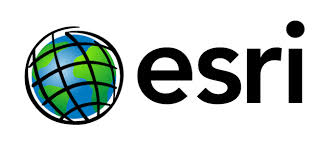
15. Esri
Esri develops ArcGIS, a platform that brings together mapping, spatial analytics, and location-based intelligence for organizations managing land, water, and other natural resources. Their software helps users visualize data through maps, analyze environmental patterns, and share insights for planning and conservation. It’s widely used by governments, researchers, and nonprofits to better understand climate change, ecosystem health, and urban development.
By using the geographic approach, Esri allows people to uncover relationships between natural and human systems. Users can integrate data from multiple sources, run spatial analyses, and model environmental scenarios that help guide resource management. Beyond mapping, the ArcGIS platform supports collaboration, allowing teams to share findings and make informed decisions quickly.
Key Highlights:
- GIS platform combining mapping and spatial analytics
- Tools for visualizing environmental patterns and resource data
- Supports multi-layered analysis and predictive modeling
- Cloud-based collaboration for real-time decision-making
- Applications in conservation, climate, and infrastructure planning
Who it’s best for:
- Government and public sector organizations
- Conservation and environmental research groups
- Urban and regional planners
- Businesses using location-based analytics
Contact and Social Media Information:
- Website: www.esri.com
- Address: 380 New York Street Redlands, California United States of America
- Phone: +1-909-793-2853
- LinkedIn: www.linkedin.com/company/esri
- Instagram: www.instagram.com/esrigram
- Twitter: x.com/Esri
- Facebook: www.facebook.com/esrigis
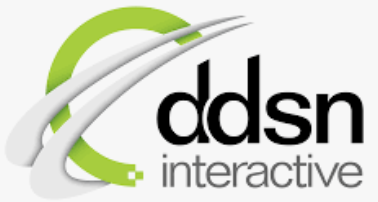
16. DDSN Interactive
DDSN Interactive develops digital platforms that support environmental and resource-focused organizations in managing data and operations online. Their Digital NRM (Natural Resource Management) solution brings together web applications, automation, and integration tools that help teams plan, monitor, and share conservation and sustainability projects. Instead of relying on scattered systems, organizations can manage environmental information, communications, and project updates through a unified digital platform.
They work with sectors like conservation, water management, and research, building software that fits real operational needs rather than generic templates. DDSN combines website development, data integration, and AI-driven tools to make environmental reporting and resource tracking easier to manage. Their work with groups such as Bush Heritage Australia and Goulburn-Murray Water shows a focus on creating practical systems that connect digital strategy with hands-on natural resource management.
Key Highlights:
- Developer of Digital NRM software for environmental organizations
- Focus on integrated data management and digital operations
- Combines website platforms, automation, and AI integration
- Used by conservation, research, and water management sectors
- Locally hosted, secure, and customizable digital systems
Who it’s best for:
- Environmental and conservation organizations
- Water resource and land management agencies
- Research institutions and sustainability programs
- Nonprofits looking to digitize project coordination
Contact and Social Media Information:
- Website: ddsn.com
- Address: Level 5, 111 Cecil St South Melbourne, VIC Australia 3205
- Phone: +61 3 9533 8800
- LinkedIn: www.linkedin.com/company/ddsn-interactive
- Instagram: www.instagram.com/ddsninteractive
- Twitter: x.com/ddsn
- Facebook: www.facebook.com/ddsn.interactive
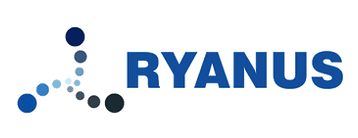
17. Ryanus
Ryanus focuses on engineering software and consulting services that help organizations simulate and optimize systems related to natural and built environments. Their expertise in modeling, computer-aided engineering, and simulation-based analysis supports industries dealing with energy, water, and materials. By using tools like Geovia and other 3D modeling platforms, they help visualize how natural systems interact with infrastructure, supporting smarter resource use and planning.
Their consulting approach combines computer-aided design with simulation tools that assess durability, fluid dynamics, and environmental interactions. While much of their work supports industrial clients, it also contributes to understanding how resources behave under real-world conditions. This mix of technical modeling and environmental insight makes their services relevant to both sustainability and performance improvement projects.
Key Highlights:
- Offers modeling and simulation software for environmental systems
- Expertise in Geovia for land and resource modeling
- Provides analysis and optimization for energy and water systems
- Supports product and infrastructure design with CAE tools
- Focus on data-based decision-making for sustainable performance
Who it’s best for:
- Engineering and environmental consultants
- Water, energy, and materials management projects
- Research and development teams using simulation tools
- Organizations seeking to improve efficiency through modeling
Contact and Social Media Information:
- Website: www.ryanus.com
- Address: 101 Avenue, First Floor, NH-5, Railway Road, Faridabad, Haryana 121001, India
- Phone: +91 129 413 5544
- E-mail: info@ryanus.com
- LinkedIn: www.linkedin.com/company/ryanus-consulting
- Twitter: x.com/Ryanus_India
- Facebook: www.facebook.com/ryanusindia/

18. Nala Earth
Nala Earth provides a digital platform that helps companies understand and manage their relationship with nature. Their tools make it easier to measure biodiversity, assess environmental risks, and align sustainability reporting with international standards like CSRD and TNFD. Instead of treating nature as an afterthought, the platform integrates biodiversity and resource data directly into corporate decision-making.
Their system combines environmental science, data analytics, and business planning in one place. Teams can use it to locate biodiversity hotspots, monitor land or water impact, and create long-term nature-positive strategies. Nala Earth aims to bridge the gap between sustainability experts and business leaders, helping organizations translate ecological data into practical actions.
Key Highlights:
- Platform for tracking biodiversity and nature-related impacts
- Supports sustainability reporting and regulatory compliance
- Data-based insights for managing environmental risks
- Combines ecological science with business planning tools
- Focus on nature-positive strategies for organizations
Who it’s best for:
- Corporations managing sustainability or ESG programs
- Environmental and biodiversity consultants
- Researchers studying nature-related business risks
- Enterprises reporting under CSRD or TNFD frameworks
Contact and Social Media Information:
- Website: www.nala.earth
- Address: Linienstraße 86, 10119 Berlin, Germany
- E-mail: info@nala.earth
- LinkedIn: www.linkedin.com/company/nala-earth
- Instagram: www.instagram.com/nala_earth

19. NRDS
NRDS (Natural Resource Data Solutions) builds digital tools that connect data collection, GIS mapping, and project management for agriculture and conservation. Their software helps teams track fieldwork, measure environmental goals, and share results through dashboards that combine photos, reports, and geospatial data. The platform works online and offline, which makes it especially useful in remote field conditions.
The NRDS ‘Āina app extends this functionality to mobile devices, allowing users to collect data and sync it when back online. Teams can map boundaries, monitor water or land conditions, and collaborate across different locations in real time. This kind of practical technology bridges the gap between on-site conservation work and centralized data management.
Key Highlights:
- Place-based project management and GIS mapping platform
- Mobile app for offline data collection and synchronization
- Real-time dashboards for environmental tracking and reporting
- Built for agriculture, conservation, and fieldwork collaboration
- Supports photo documentation, GPS tracking, and analysis
Who it’s best for:
- Conservation and land management organizations
- Agricultural projects and sustainability teams
- NGOs tracking environmental and social impact
- Research groups working in remote or offline areas
Contact and Social Media Information:
- Website: nrdsdata.com
- Address: 580 Awalau Road, Haiku, HI 96708, USA
- Phone: +1 808 895 4542
- E-mail: support@nrdsdata.com
Conclusion
When you look at how natural resource management has evolved, it’s clear that technology is doing more than just helping – it’s reshaping the whole process. Tools that once took specialists weeks to use can now deliver insights in minutes, giving teams a clearer picture of what’s changing in the environment and why.
The real value isn’t just in fancy dashboards or AI models, but in how these tools fit into everyday work. Whether it’s keeping an eye on forest cover, checking water levels, or spotting illegal land use, the right tech makes it possible to respond faster and smarter. And sure, no tool is perfect, but with how quickly they’re improving, managing natural resources has become a lot more about prevention than reaction – and that’s a big step forward.
